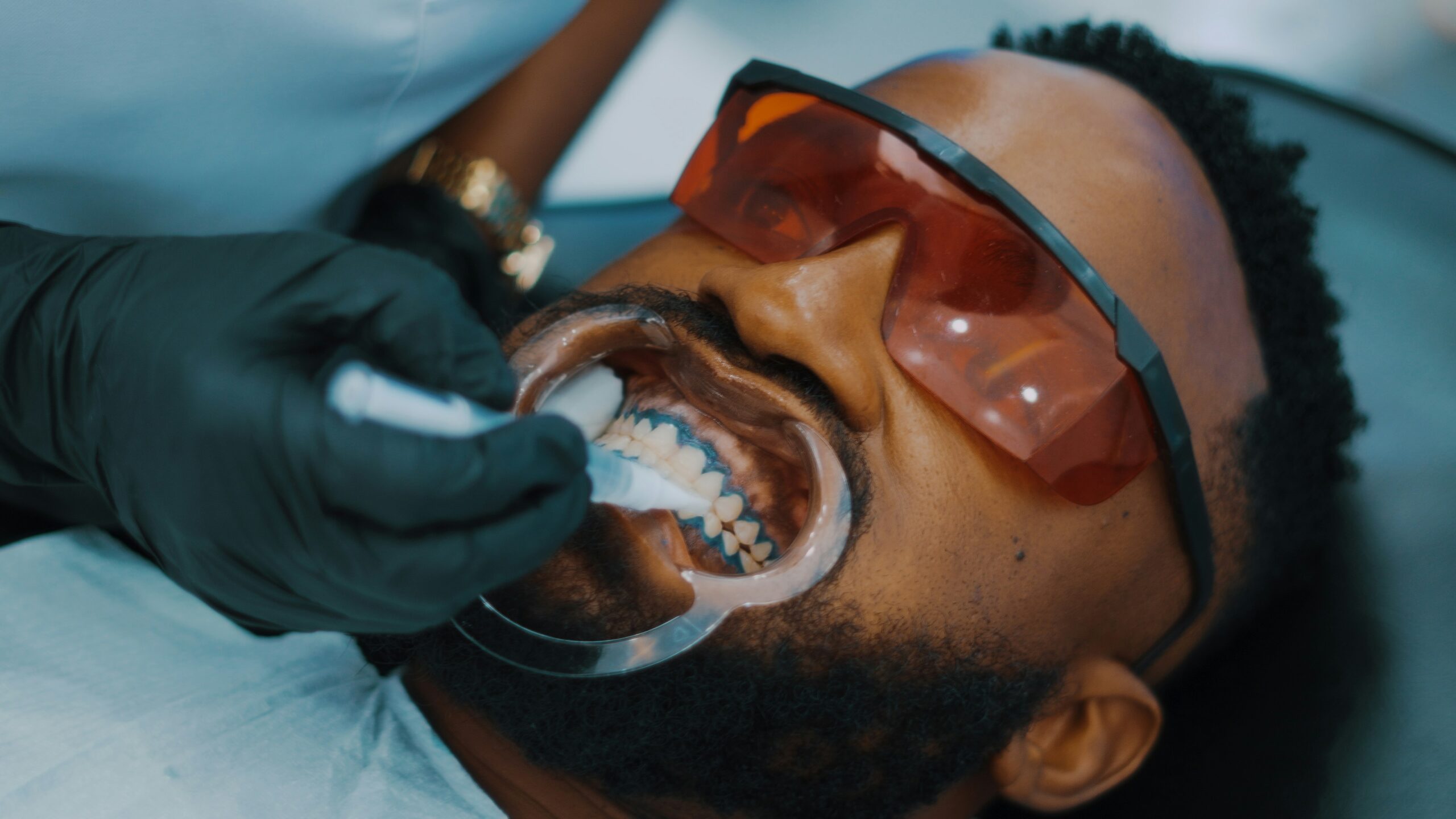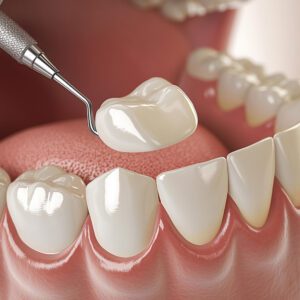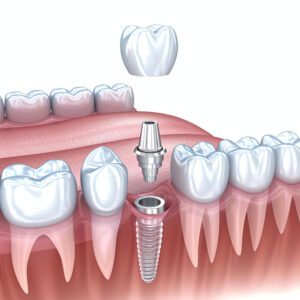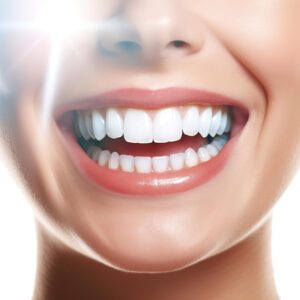What is Cosmetic Dentistry?
Cosmetic dentistry is a specialized field of dental care that focuses primarily on enhancing the aesthetic appearance of a person’s smile. This branch of dentistry is distinct from general dentistry, which primarily addresses oral health issues such as cavities, gum disease, and other functional concerns. While general dentists ensure the overall health of the teeth and gums, cosmetic dentists aim to improve the visual aspects of dental features, including color, shape, size, alignment, and overall harmony.
The purpose of cosmetic dentistry is not only to improve the visual appeal of a person’s smile but also to instill a sense of confidence and self-esteem in patients. This is particularly crucial as a positive self-image can significantly influence personal and professional aspects of life. Many individuals experience increased social interactions, job opportunities, and improved relationships due to enhancements in their dental aesthetics. Procedures such as teeth whitening, veneers, and orthodontics are common practices associated with cosmetic dentistry and serve to transform smiles, thereby enhancing confidence.
Moreover, cosmetic dentistry plays an essential role in improving overall oral health. Many aesthetic procedures can also contribute to better functionality and long-term sustainability of dental structures. For instance, correcting misaligned teeth not only beautifies a smile but also aids in more efficient chewing and reduces wear on teeth. Similarly, dental implants can replace missing teeth, preventing further oral health complications such as bone loss and shifting of adjacent teeth.
In conclusion, cosmetic dentistry embodies a comprehensive approach to improving dental aesthetics while simultaneously promoting better oral health. It combines artistic skills and scientific techniques, making it a vital aspect of modern dental practices. Patients who seek cosmetic dental services often find not only enhanced smiles but also increased confidence in their everyday lives.
Common Cosmetic Dentistry Procedures
Cosmetic dentistry encompasses a variety of procedures designed to enhance the appearance of a person’s smile. One of the most popular treatments is teeth whitening, which aims to lighten the color of the teeth, eliminating stains caused by aging, diet, or lifestyle choices. This procedure can take place in a dental office, where professionals use bleaching agents or take-home kits with customized trays for convenient use at home. The primary benefit of teeth whitening is a brighter, more youthful smile.
Another common option is dental veneers, which are thin shells made from porcelain or composite resin that are bonded to the front surface of the teeth. This procedure corrects various imperfections, including chips, gaps, and discoloration. The process generally involves minimal tooth reduction and can significantly enhance the overall appearance of the smile, providing a natural aesthetic and improved self-esteem.
Crowns are a versatile solution in cosmetic dentistry, used to reshape and reinforce teeth that are damaged or severely decayed. A crown covers the entire tooth, providing both protection and improved aesthetics. Typically made from materials such as ceramic or metal, crowns blend seamlessly with the natural teeth and restore functionality while enhancing the smile’s appearance.
Bridges are another restorative option, specifically used to replace one or more missing teeth. This procedure utilizes adjacent teeth for support to hold a prosthetic tooth in place. Bridges not only improve aesthetics by filling gaps but also restore normal chewing function and maintain facial structure.
Orthodontic treatments, including traditional braces or clear aligners, target misalignments in teeth and jaws. These procedures work over time to reposition teeth, resulting in a straighter smile that can also improve oral health by making it easier to clean the teeth effectively. Overall, these procedures exemplify how cosmetic dentistry can enhance both the visual appeal of a patient’s smile and their self-confidence.
The Benefits of Cosmetic Dentistry
Cosmetic dentistry encompasses a variety of dental procedures aimed at enhancing the appearance of an individual’s smile. While aesthetics remain a primary focus, the associated benefits extend far beyond mere appearance. One of the most significant advantages of cosmetic dentistry is the improvement in self-esteem that often accompanies a more attractive smile. Individuals who invest in their smiles frequently report feeling more confident in social situations, which can positively influence both personal and professional interactions.
In addition to boosting self-esteem, cosmetic dentistry procedures can lead to better oral health. For instance, treatments such as dental veneers or crowns not only improve the look of damaged teeth but also provide structural support, reducing the risk of further decay or damage. Moreover, cosmetic dentistry often addresses misalignment issues that may result in uneven wear on teeth. By realigning teeth or correcting bite problems with orthodontics or restorations, patients can maintain better oral health over time.
Enhanced functionality is another vital benefit of cosmetic procedures. Replacing missing teeth with dental implants, for example, restores the ability to chew effectively, thereby improving overall nutrition and digestion. This restoration can also prevent the potential shifting of surrounding teeth, which might occur when a gap is left unaddressed. As a result, individuals can enjoy a more comprehensive range of foods without discomfort, contributing to a better quality of life.
Overall, the benefits of cosmetic dentistry extend beyond aesthetics, fostering a more confident self-image, better oral health, and improved functionality. These advantages collectively enhance one’s quality of life, demonstrating that investing in one’s smile is an investment in overall well-being.
Considerations Before Choosing Cosmetic Dentistry
Before embarking on a journey into cosmetic dentistry, it is imperative for patients to weigh various factors that could influence their decision. A fundamental consideration is the cost associated with the procedures. Cosmetic dentistry can be a significant financial investment, and prices can vary widely depending on the type of treatment, the dentist’s expertise, and geographical location. Patients should explore their options thoroughly, consider the long-term financial implications, and assess their insurance coverage, as many cosmetic procedures are not covered by dental plans.
Another vital aspect to consider is the potential risks involved in cosmetic treatments. While many procedures are considered safe, they are not devoid of complications. Patients should be informed about possible side effects, such as sensitivity, infection, or dissatisfaction with the results. Engaging in open communication with a qualified dentist can help manage expectations and ensure that individuals are fully aware of the risks associated with their chosen procedures.
Recovery time also plays a crucial role in the decision-making process. Depending on the complexity of the procedure, patients may need to accommodate for a healing period that can affect their daily lives. Understanding the expected recovery duration and planning accordingly is essential to ensure a smooth transition back to regular activities. Moreover, individual health conditions should not be overlooked. Certain medical issues, such as diabetes or autoimmune disorders, could impact healing and the outcome of cosmetic treatments. Consulting with health care providers and undergoing a thorough dental evaluation will ensure a tailored approach that aligns with one’s unique health profile.
In conclusion, acknowledging these considerations can empower patients to make informed decisions about their cosmetic dentistry journey. Ensuring that all factors are carefully evaluated promotes a positive experience in enhancing one’s smile and confidence.
Choosing the Right Cosmetic Dentist
When embarking on a journey to enhance one’s smile through cosmetic dentistry, the selection of an appropriate cosmetic dentist plays a crucial role in achieving desired outcomes. Several factors should be considered in this process, beginning with the credentials of the dentist. It is imperative to verify that the dentist holds the necessary degrees, licenses, and specialized training in cosmetic dental procedures. Many cosmetic dentists will have memberships in professional organizations, such as the American Academy of Cosmetic Dentistry (AACD), which can further indicate their commitment to continuing education in the field.
Experience is another vital criterion when choosing the right cosmetic dentist. The number of years the dentist has been practicing in cosmetic procedures, coupled with their specific expertise in techniques such as veneers, teeth whitening, or dental implants, can be indicative of their proficiency. Prospective patients are encouraged to inquire about the dentist’s previous cases similar to their own and to assess the outcomes to ensure satisfaction with the potential results.
Patient reviews and testimonials also provide valuable insight into the cosmetic dentist’s skills and the overall patient experience. Reading feedback from former patients can illuminate the level of care, attention to detail, and the dentist’s ability to deliver on aesthetic promises. Online platforms, such as healthcare review sites and social media, allow prospective patients to gather diverse opinions and experiences regarding the dentist in question.
Lastly, scheduling initial consultations with potential cosmetic dentists can further facilitate the decision-making process. These meetings offer an opportunity for patients to discuss their aesthetic goals and evaluate whether the dentist’s vision aligns with their own. During these consultations, communication style, approach to treatment, and the office environment can all be assessed, ensuring that the patient is comfortable throughout their treatment journey. Establishing trust and rapport is essential when selecting a cosmetic dentist, ultimately contributing to an enhanced smile and increased confidence.
The Cost of Cosmetic Dentistry
Cosmetic dentistry encompasses a variety of procedures designed to improve the appearance of teeth, gums, and smiles. However, prospective patients often find themselves concerned about the cost of these treatments. Several factors significantly influence the overall expense, making it essential to understand the financial implications associated with cosmetic procedures.
Firstly, the complexity of the desired procedure plays a critical role in determining cost. Simple treatments, like teeth whitening, generally come at a lower price point compared to more complex options such as dental implants or full smile makeovers. The intricacy of the procedure often correlates with the skill and experience of the dentist, which can also escalate costs. Dentists who specialize in cosmetic dentistry can provide top-tier results, but their services may come with a higher price tag.
Secondly, geographic location influences pricing. Cosmetic dentistry costs can vary significantly between urban and rural areas, with urban centers typically exhibiting higher prices due to higher living costs and demand for premium dental services. It is advisable for patients to research and compare prices from various practitioners in their region to make informed decisions.
The materials used during the procedure are another contributing factor. High-quality materials, such as porcelain or high-grade dental composites, often yield better and longer-lasting results but come at a premium. It’s crucial to weigh the benefits of investing in superior materials against the allure of more economical options.
Lastly, patients should consider whether their dental insurance will cover any part of the treatments. Some cosmetic procedures may be deemed medically necessary and eligible for coverage, while others may not qualify. It is recommended to consult with both the dental office and the insurance provider to clarify coverage details prior to committing to treatment.
Latest Trends in Cosmetic Dentistry
Cosmetic dentistry continues to evolve, incorporating cutting-edge techniques and technologies that enhance both patient experience and treatment outcomes. Among the most significant advancements is the implementation of 3D printing, which has revolutionized how dental restorations and implants are manufactured. This technology allows dental professionals to create highly accurate impressions of a patient’s teeth, resulting in custom-made crowns, bridges, and aligners that fit seamlessly. As a result, patients benefit from reduced waiting times and improved comfort during procedures.
Another notable trend in cosmetic dentistry is the use of laser treatments. Laser technology has been utilized for years in various medical fields and is now making significant strides within dental practices. Lasers can effectively treat a range of conditions, including gum reshaping, tooth whitening, and decay removal, all while minimizing discomfort and recovery time for patients. This innovative approach offers a less invasive alternative to traditional methods, enhancing the overall patient experience and fostering greater satisfaction with the treatments provided.
Minimally invasive procedures are also gaining prominence in cosmetic dentistry. These techniques prioritize preserving as much of the natural tooth structure as possible while achieving aesthetic enhancements. For instance, techniques such as bonding, contouring, and the use of ultra-thin porcelain veneers allow for significant cosmetic improvements without the need for extensive alterations to the teeth. This trend not only prioritizes patient comfort but also supports long-term dental health by maintaining the integrity of the original tooth structure.
The integration of digital technology, including virtual consultations and teledentistry, further enhances accessibility to cosmetic dental services. Patients are now able to receive expert advice and treatment planning from the comfort of their homes, significantly broadening the reach of cosmetic dental care.
Maintaining Results After Cosmetic Dentistry
Once a patient has undergone cosmetic dentistry procedures, it is essential to adopt practices that ensure the longevity of the results. Effective maintenance of these results not only enhances the aesthetic benefits but also contributes to overall oral health. One of the primary ways to uphold the outcomes of cosmetic treatments is through diligent oral hygiene practices. This includes brushing teeth at least twice daily with fluoride toothpaste and flossing regularly to remove plaque buildup that can lead to decay or gum disease.
In addition to proper oral hygiene, lifestyle choices play a crucial role in maintaining the results of cosmetic dentistry. Patients should be aware that habits such as smoking or excessive alcohol consumption can negatively affect the integrity of dental enhancements, such as whitening treatments and veneers. It is advisable to limit the intake of staining substances like coffee, tea, and red wine. Should consumption of these items be unavoidable, rinsing the mouth with water afterward can mitigate their impact.
Moreover, scheduling regular dental check-ups cannot be overstated. These visits allow dental professionals to monitor the condition of cosmetic restorations and address any potential issues before they become more serious. During these appointments, dentists can provide professional cleanings that are essential for removing tartar and ensuring the health of gums and teeth. Additionally, they can assess the health of the underlying structures to maintain the aesthetic results achieved through cosmetic procedures.
Ultimately, taking responsibility for one’s dental health post-treatment is paramount. By implementing a robust oral care routine, making mindful lifestyle decisions, and seeking regular dental check-ups, patients can enjoy a radiant smile and heightened confidence for many years following their cosmetic dentistry procedures.
Real-Life Transformations: Success Stories in Cosmetic Dentistry
Cosmetic dentistry has become a focal point of transformation for individuals seeking to enhance their smiles and boost their self-esteem. Numerous success stories highlight the profound impact that procedures such as teeth whitening, veneers, orthodontics, and dental implants can have on patients’ lives. These transformations not only improve aesthetic appeal but also contribute significantly to emotional and psychological well-being.
For example, consider the case of a young professional who had struggled with misaligned teeth throughout her teenage years. After undergoing orthodontic treatment, her smile was dramatically improved. The self-confidence she gained from her new appearance empowered her to pursue new opportunities in her career and personal life. Testimonials from patients like her often reveal that the newfound confidence translates into heightened social interactions, better job prospects, and an overall enhanced quality of life.
Another compelling story involves a middle-aged man who had long avoided smiling due to the condition of his teeth. Following a comprehensive treatment plan that included dental implants and cosmetic bonding, he experienced a remarkable transformation. The act of smiling, which once filled him with apprehension, became a source of pride. He reported feeling a renewed sense of happiness and was more willing to engage with others socially, demonstrating the deep emotional connections that can arise from cosmetic enhancements.
Moreover, individuals who have chosen teeth whitening procedures frequently express high levels of satisfaction. They describe feeling more attractive and vibrant after their treatments, leading to positive changes in their interactions with friends and family. Such stories emphasize that the impact of cosmetic dentistry extends beyond mere aesthetics; it can lead to profound shifts in self-perception and interpersonal relationships. Through these narratives, it is evident that the enhancements achieved via cosmetic procedures resonate deeply in various aspects of patients’ lives.













